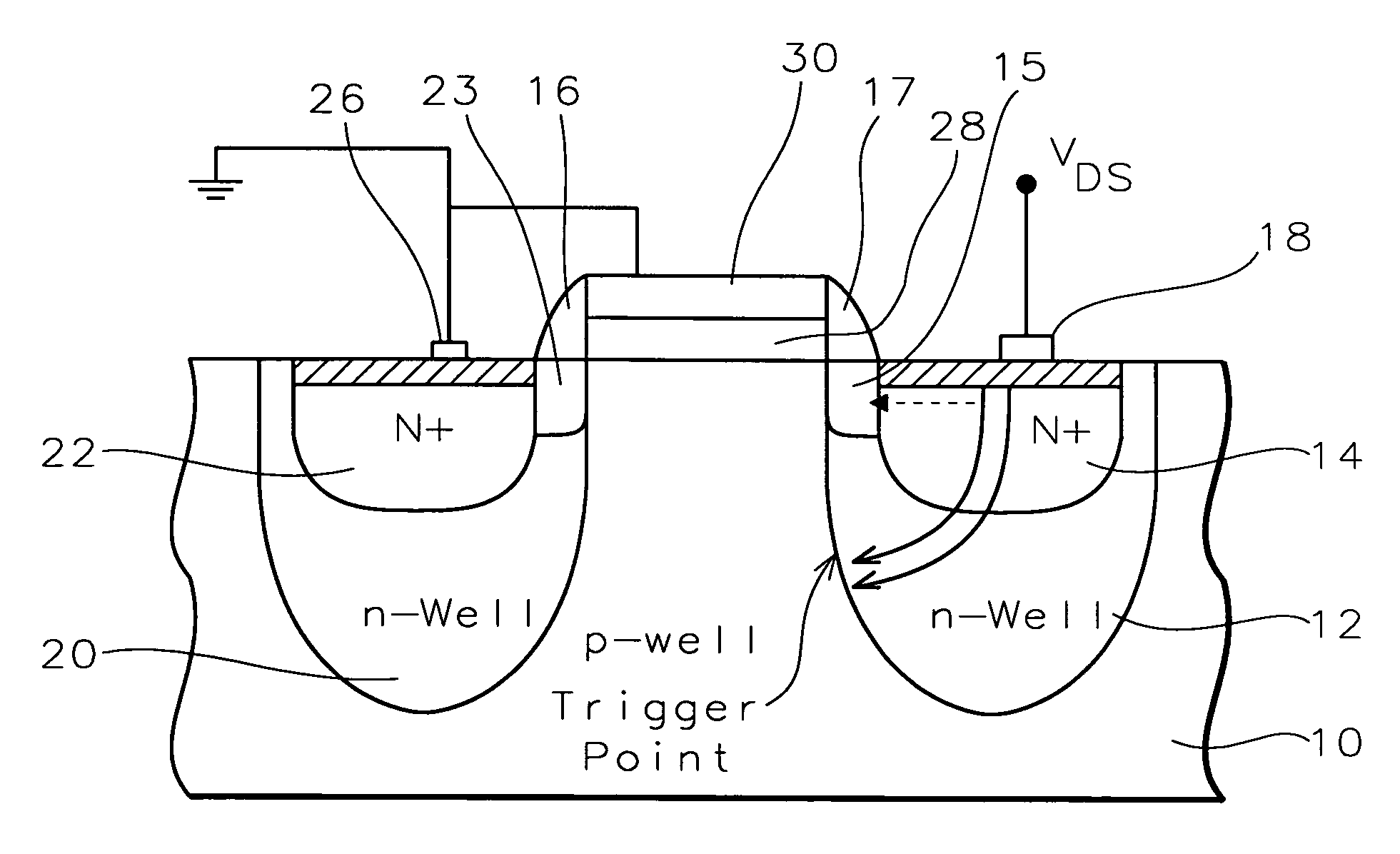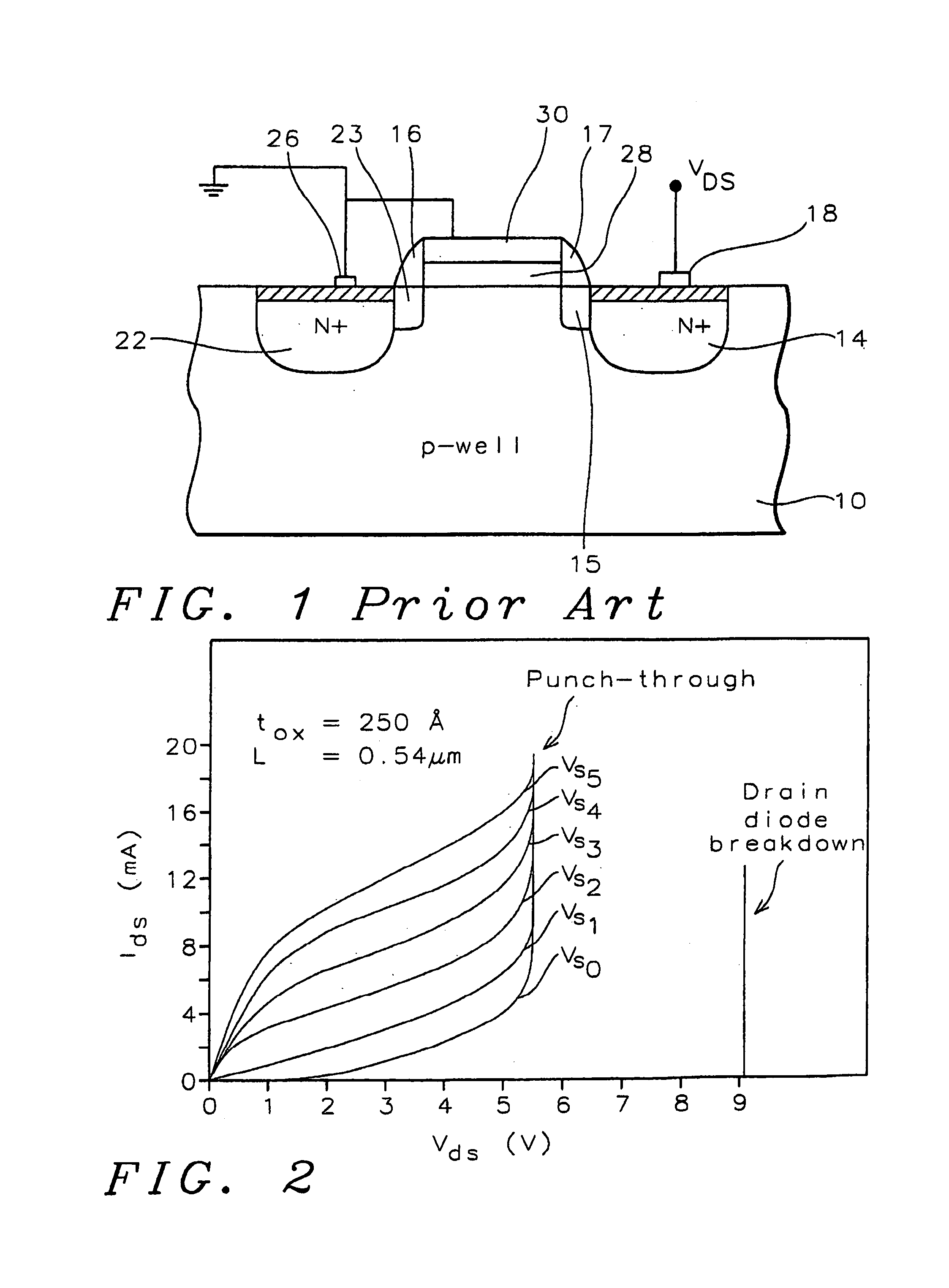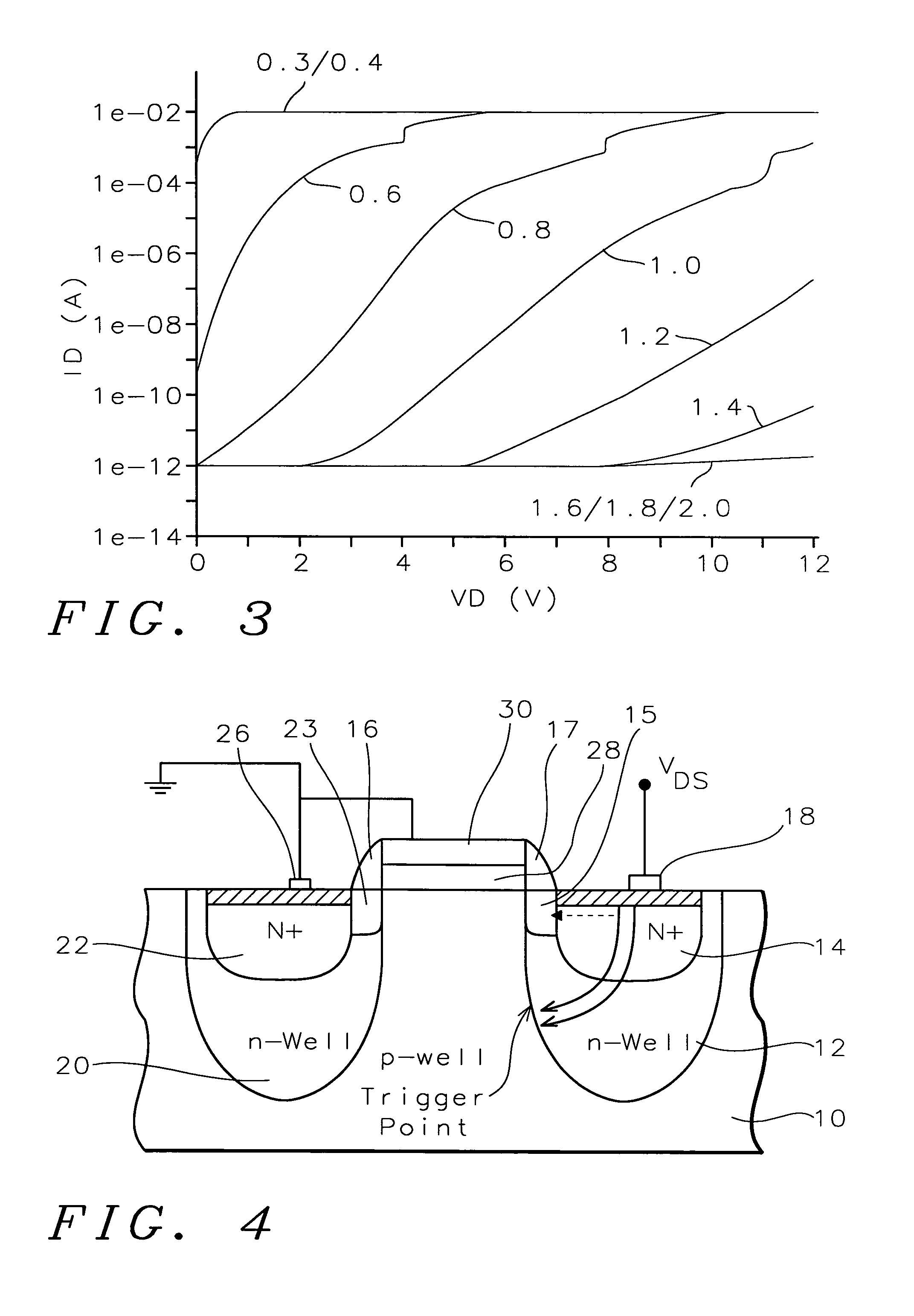Fully silicided NMOS device for electrostatic discharge protection
a technology of nmos and shielding device, which is applied in the direction of transistors, basic electric elements, electric devices, etc., can solve the problems of reducing the protection performance of ggnmos device, reducing ics being susceptible to damage, so as to improve the esd protection performance, reduce the depletion barrier, and improve the effect of esd characteristics
- Summary
- Abstract
- Description
- Claims
- Application Information
AI Technical Summary
Benefits of technology
Problems solved by technology
Method used
Image
Examples
Embodiment Construction
[0026]The present invention uses a method of ESD protection using a grounded gate NMOS (GGNMOS) device to provide the low resistance discharge path. N-wells are added below the source and drain regions of a GGNMOS device in order to tailor the doping profiles of those regions. Snapback is used to provide ESD protection. As VDS increases, the potential barrier at the n-well source is lowered due to the DIBL effect. Generation of electron-hole pairs in the drain well depletion region also occurs. This generation current dominates and increases with VDS. This results in a higher electric field and higher electron-hole generation current. The hole current will be injected into the p-well, forward biasing the p-well / n-well source junction. The DIBL effect aids this by lowering the potential barrier at the n-well source. Once the p-well / n-well source junction is forward biased, the device behaves as an NPN transistor where the drain acts as the collector. A low resistance discharge path i...
PUM
 Login to View More
Login to View More Abstract
Description
Claims
Application Information
 Login to View More
Login to View More - R&D
- Intellectual Property
- Life Sciences
- Materials
- Tech Scout
- Unparalleled Data Quality
- Higher Quality Content
- 60% Fewer Hallucinations
Browse by: Latest US Patents, China's latest patents, Technical Efficacy Thesaurus, Application Domain, Technology Topic, Popular Technical Reports.
© 2025 PatSnap. All rights reserved.Legal|Privacy policy|Modern Slavery Act Transparency Statement|Sitemap|About US| Contact US: help@patsnap.com



